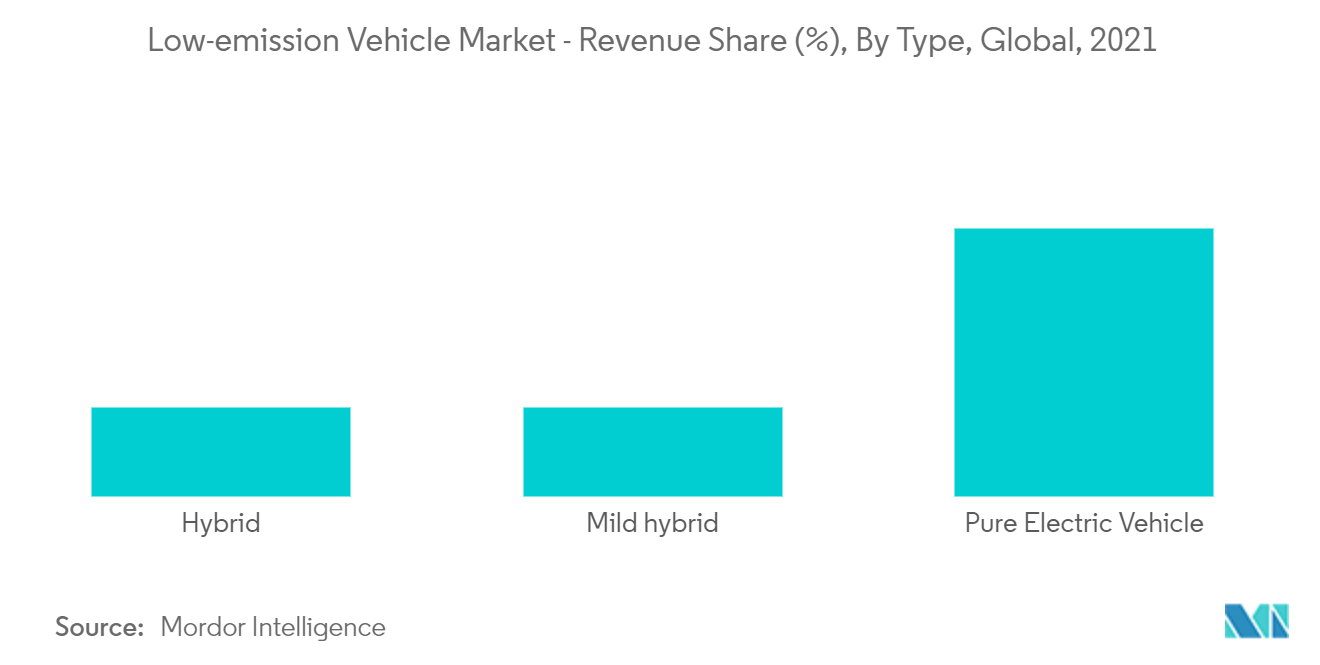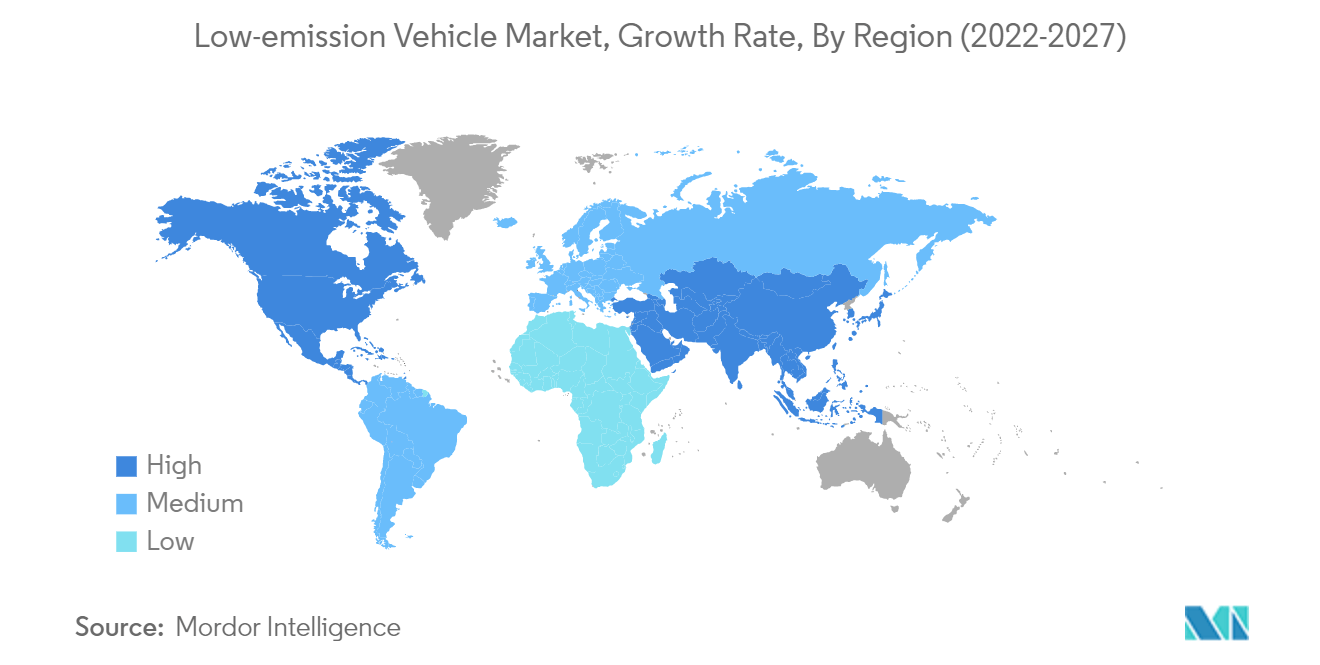Market Trends of Low Emission Vehicle Industry
This section covers the major market trends shaping the Low-Emission Vehicle Market according to our research experts:
Favorable Government Policies and Regulatory Norms are Expected to Drive the Market
- The sales of electric vehicles are still majorly driven by the polic
- y environment. The ten leading countries (such as China, United States, Norway, Germany, Japan, United Kingdom, France, Sweden, Canada, and the Netherlands) in electric vehicle adoption have a range of policies in place to promote the sales of electric vehicles. Primary examples of these programs and initiatives are public procurement programs, financial incentives to facilitate EV production and acquisition, and cutting their usage cost (e.g., by offering free parking).
- A variety of regulatory policies at different administrative levels, such as fuel-economy standards and restrictions on the circulation of vehicles based on emissions performance, are also driving the market.
- For instance, Bharat Stage (BS) norms aim at tighter regulations by reducing the permissible level of tailpipe pollutants. For example, BS-IV - introduced in 2017, allowed 50 parts per million (ppm) of sulfur, while the new and updated BS-VI - applicable from 2020, allows only ten ppm of sulfur, 80 mg of NOx(Diesel), 4.5 mg/km of particulate matter, 170 mg/km of hydrocarbon and NOx together.
- With its FAME and FAME II policies, India is providing attractive options for investors and manufacturers to set up EV plants in the country to propel the country toward a faster adoption of green vehicles. Public transportation across many cities and countries is being reviewed, and subsequently, through subsidies, Electric buses are replacing ICE buses. For instance, in 2021, there were close to one thousand electric buses used in public transport in India. With 246 e-buses, Mumbai ranked the top in the country.
- Thailand has 1,000 charging stations across the country. One of their primary efforts is to have 53,000 electric motorcycle taxis and 5,000 electric buses on the road by the end of 2022 and 2025, respectively. The Asian Development Bank and Energy Absolute have signed a USD 48 million green loan to fund Thailand's nationwide electric vehicle charging network.
- The announcement of Malaysia's National Low Carbon Cities 2030 plan includes the creation of 200 low-carbon zones around the country, which might result in a more significant push for green transportation alternatives, including electric vehicles. Malaysia also intends to construct 25,000 public and 100,000 private charging stations by 2030.

China Is Expected To See Highest Growth
- With rapid urbanization, China is determined to reduce the polluting emissions from its road transport vehicles. At the same time, it also intends to reduce the country's dependence on hydrocarbon imports and support the development of the industrial sector. China is the largest manufacturer and consumer of electric vehicles in the world. National sales targets, favourable laws, supportive subsidies, and municipal air-quality targets are supporting domestic demand. For instance,
- China has by far the biggest electric vehicle industry in the world. As the largest EV manufacturer, China's EV production amounted to 3.5 million units in 2021, an increase of 1.6 times year-over-year. Revenues from the electric vehicle market reached approximately 102.2 billion U.S. dollars for the year, the highest in the Asia-Pacific region.
- China imposed a quota on manufacturers for 100% electric or hybrid vehicles, which must represent at least 10% of total new sales. Additionally, some major cities and provinces are imposing increasingly stringent restrictions. For instance, Beijing only issues 10,000 permits for registering combustion-engine vehicles per month to encourage its inhabitants to switch to electric vehicles. These measures are leading China to formulate resolute and optimistic prospects for the development of electric vehicles in the country, which is expected to drive the market.
- The growing government regulations improving electric vehicle adoption and robust expansion adopted by OEMs and suppliers in the region to accommodate rising demand from the automotive industry in China are expected to create a positive outlook for market growth during the forecast period. For instance,
- The government of China is encouraging people to adopt electric vehicles. The country has already made plans to phase out diesel fuel, which runs the current generation of tractors and construction equipment. The country is planning to ban diesel and petrol vehicles completely by 2040.
- In the last three years, nearly 60,000 light trucks and vans have been deployed for urban freight movement in Shenzhen, representing approximately 35% of the city's overall fleet of urban delivery vehicles.
- With the above-mentioned developments, low-emission vehicles are witnessing significant growth during the forecast period.


